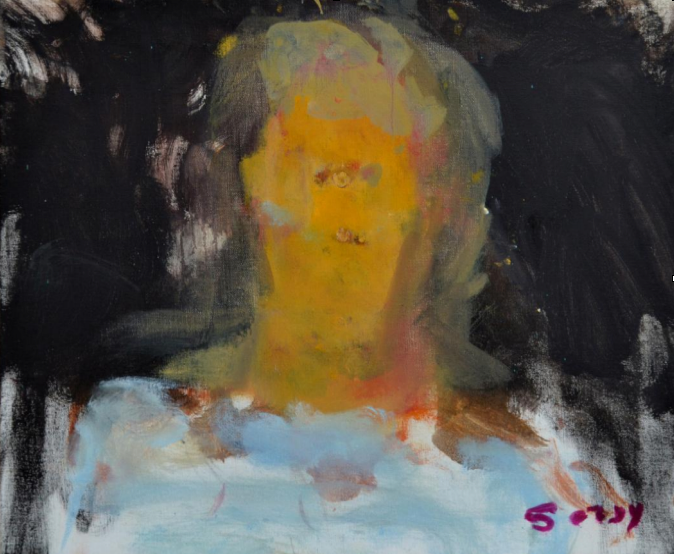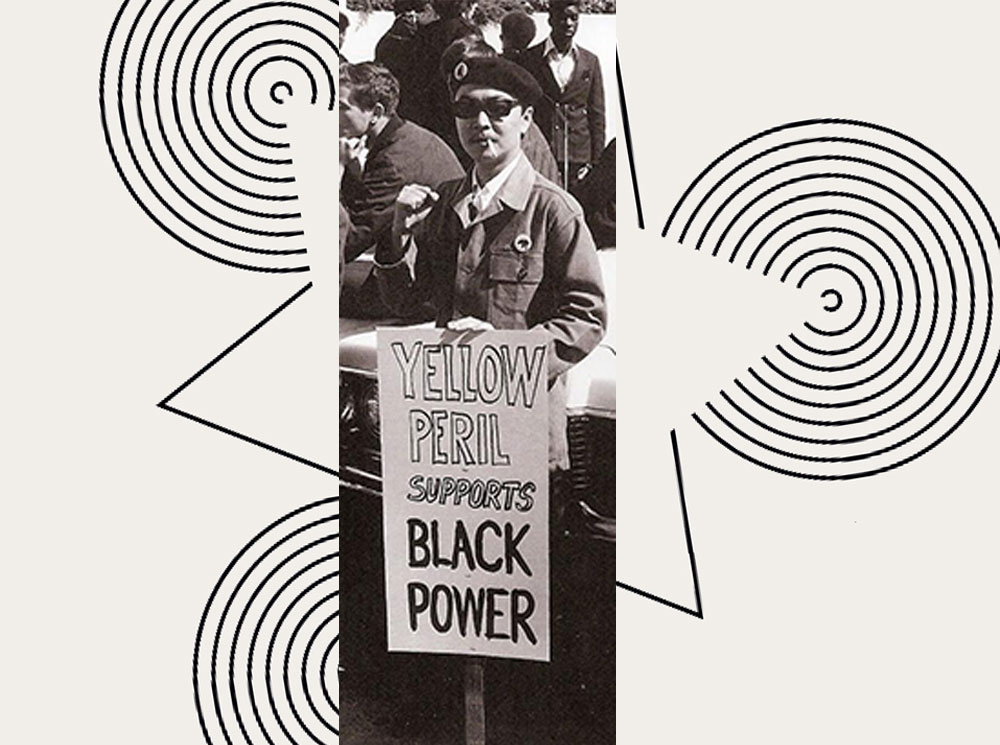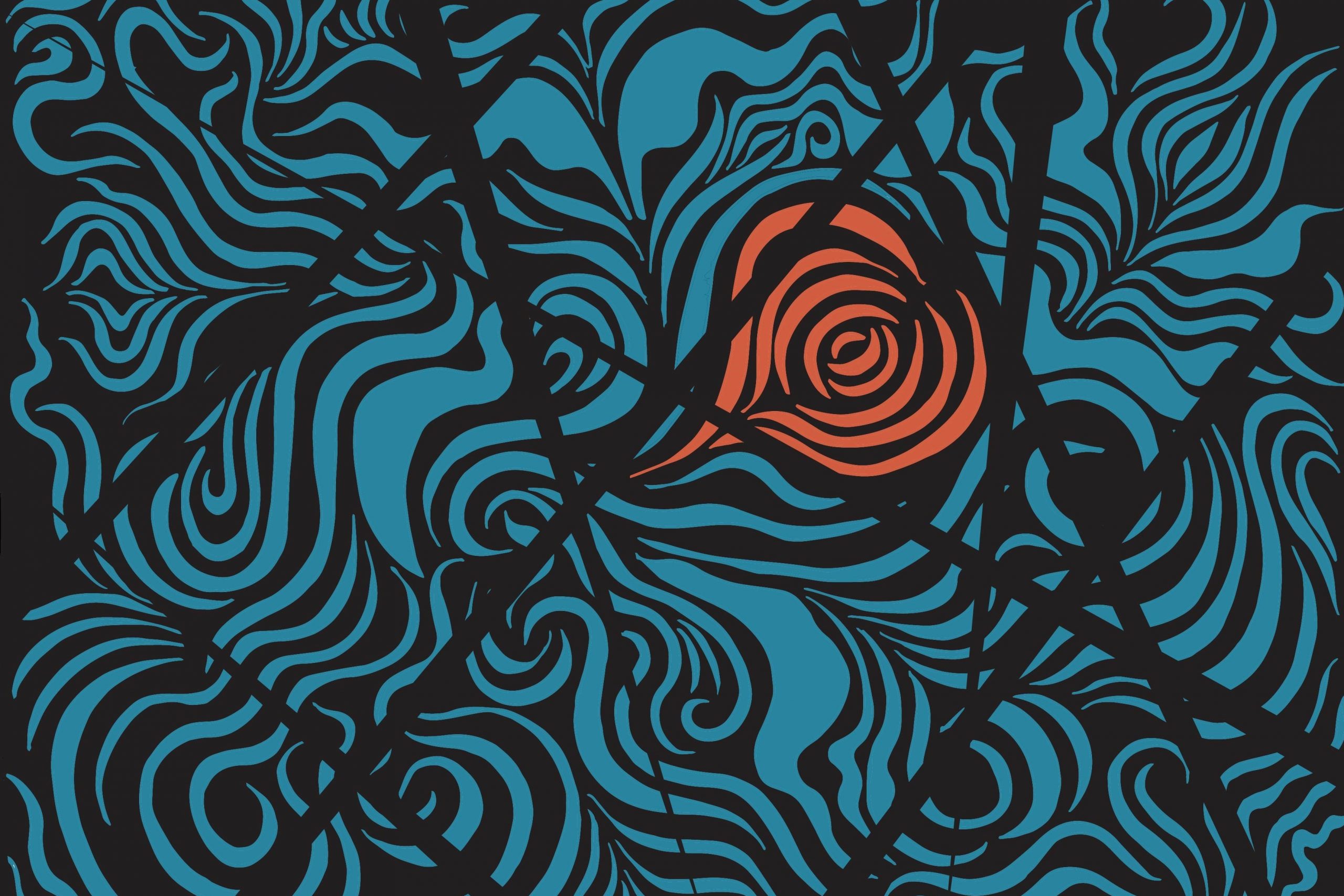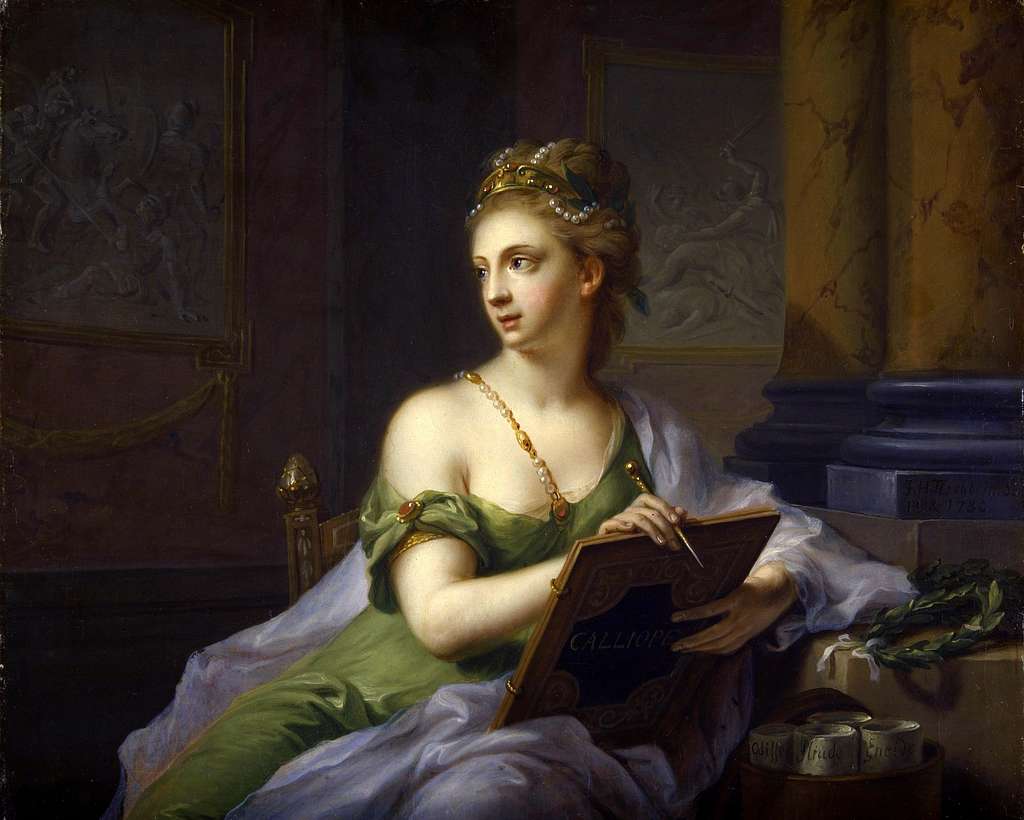
‘Invisible to Mortal Sight’: Sargy Mann and the Art of Darkness
Her eyes meet yours with the guarded yet knowing gaze of age, staring out from within a fleshed but still skull-like head. She sits upright in a severe wooden armchair her left hand crooked on the rest and her right clutching a bundle of white rags. Clothed in dull browns and blacks that seem both to settle into, and emerge from, the background, the wife of Jacob Trip waits in eternal expectation of her future viewers; her name is Margherita de Geer.
What did you see when you first encountered Rembrandt’s enigmatic portrait? Perhaps an archetypal old lady, whose features reminded you of a neighbour or relative? Perhaps you marvelled at the painter’s skill, silently exclaiming ‘that’s just what an old lady sitting in a chair looks like, that’s just what I would see!’ But that is not what Sargy Mann thinks. ‘What is in that painting is not what you would see, it’s what Rembrandt saw, and if you attend to that painting with enough love and humility and switched on passivity, you may get fleeting moments of being carried quite beyond your own capacity for experiencing another human being to something nearer Rembrandt’s, and that can be revelatory.’ When we speak of great art, like Rembrandt’s portrait, we tend to praise it in the language of seeing; we say that it is visionary. What Mann means when he calls Rembrandt’s picture ‘revelatory’ is that the eye that beheld Margherita Trip could see more than yours or mine. He believes that ‘painting contains in a communicable form, though that doesn’t mean by any means that it will always succeed in communicating, experiences of the real world which are far beyond the ken of the normal untrained person.’
Sargy Mann attended Camberwell Art College in the early 1960s, which was famous for stressing the importance of drawing and painting from observation in an age when such ostensibly traditional skills were becoming less and less central to art schools, and where he studied under the tutelage of Frank Auerbach and Euan Uglow. However the gradual deterioration of his sight, a result of several problems beginning with severe myopia, seemed to put a time bomb on his career, set to explode at the point when he finally became totally blind. But since waking up on 30th May 2005 to an intense pain in his left eye which had collapsed when an ulcer on the exterior perforated, causing the retina to detach and finally sealing him into a sightless world, instead of giving up his art, he chose to continue painting, producing work with the imaginative freedom of a 21st century Bihzad. Bihzad was a 15th century Persian miniaturist, whose career was mythologized in later Ottoman circles and in Orhan Pamuk’s 1998 novel My Name is Red, to the extent that the onset of blindness that struck him in old age was seen as a divine gift for his artistic achievement. Blindness offered Bihzad a portal into the eternal, and his work from then on eclipsed all that he had done with sight. Such mythologizing attitudes towards blind artists have a long inheritance. In an Egyptian wall scene dated 1333 – 1307 B.C. from the Tomb Chapel of Paätenemheb, Sakkara, a blank-eyed harpist tilts his head upwards as he plays, as if intimating divine truths which only he can read. Over a thousand years later, the blind prophets of classical Greek culture were revived when Milton sung of ‘Blind Thamyris and blind Meonides and Tiresias and Phineus, prophets old’, making a claim on their power for himself, as giving them, and now him, access to ‘things invisible to mortal sight’. The Argentinian writer Jorge Luis Borges, meditating as much on his own blindness as on that of his subject, said as recently as the 1980s that Homer’s lack of worldly sight had given him a ‘matchless epic power’.
Milton and Borges’ ideas about blindness acting as an artistic portal are echoed by Mann when he speaks about how it affected his own art; ‘When I could see I think I was probably a bit of a timid artist and was maybe too much influenced by the sort of masters I admire, and my own subject matter didn’t in a sense light up my mind as brightly as what I was receiving from, Monet or Cezanne or, Titian or Bonnard, so the danger was that although my intention was never to paint pastiche, that that was what I was doing because in a sense their vision was stronger than my own. And I think that as I lost more and more sight and therefore the ability to access the art of others I was thrown back upon nothing but my own experience, and that meant both my own experience of the world and also my own experience of the decorative. As I got blinder, to put it in very simple terms, the world looked different. In common terms I saw it less well, but what interested me was that it looked different and my materials looked different, I couldn’t discriminate the type of pattern that I was used to seeing earlier, so I had to invent new ways of making expressive patterns as well as having a new experience of the world to try to answer up to.’ Recalling his first experience of putting brush to canvas after going completely blind, he tells me that it was ‘one of the strangest experiences of my life’. As he loaded the brush with ultramarine and set it on the canvas, beginning a painting from memory of a seascape seen from a hotel bar in the town of Cadaques in north Spain that he had visited a few months earlier, he “saw” the canvas turn blue. ‘Next I put down my Schminke magenta and “saw” it turn rose.’ As he continued to paint, the colours appeared one after the other as visual percepts in his mind despite the fact that his brain was receiving no optical information.
It is an extraordinary thing to hear, especially for those who associate blindness with utter darkness, but it is not unprecedented. The neuroscientist Oliver Sacks, who is himself blind in one eye, has noted several cases of visual hallucinations both in himself and in the totally blind. His analysis of why this occurs is that the visual cortex, ‘isolated from the outside…becomes hypersensitive to internal stimuli of all sorts: its own autonomous activity; signals from other brain areas – auditory, tactile, and verbal areas; and thoughts, memories and emotions.’ But Mann rules out the proposition that the sudden blue and the subsequent colours which struck him so intensely, were a memory, and rejects my suggestion that they were a conscious projection. For him those vibrant colours were a sort of ‘blind vision’, the same blind vision we all experience when we dream. He calls his current dreams ‘visually immaculate’. ‘They’re certainly as good as my sight has ever been in my life and very possibly even better as I was always extremely myopic’ he says. As we go through his catalogues and some of the paintings in his studio, my eye is drawn to one in particular from 2013 named Remembrance, as being particularly emblematic, in its violent profusion of vivid ultramarine, daubed with yellows, greens, pinks and orange, of that first experience of painting fully blind, before he had developed his system for painting sightlessly. He orders his colours rigidly on his palette so that he always knows what is on the end of his brush, and mixes them with help from his wife Frances. To judge distance and perspective he uses a system of sticks which he points from his eyes towards his subject, in order to ascertain what he would see, were he able, a process that he demonstrates by pointing one towards me and resting one on my shoulder, then transferring it at a similar angle to the canvas surface. On the canvas itself he marks the outlines of his figures precisely in blue tack, before slowly building up the image with layers of finely judged oil paint.
Talking almost a decade after that first hallucinatory experience, now that he has got used to being a blind painter, one might expect that the quasi-mystical experiences involved in painting that first picture never happen anymore, but he reveals that from time to time he still “sees” colours as he paints them. This fact is reflected in Remembrance, which seems less immediately figurative than the rest of his oeuvre and on initial viewing reminded me of his first blind painting experience. When I ask Mann about it I receive a soft chuckle as he says ‘never in my life would I have called a painting Remembrance.’ It turns out the title was the gallery’s choice and on subsequent lists it has been changed to The Spinney Remembered. He reveals that it is in fact not a memory from that first blind painting experience, but from 1973 just after he had had his cataracts removed, which happened to be the same yellowy-brown ones that plagued Monet. In tones of awe, he reminisces about a sudden flood of blue light, comparable in its intensity only to his first experience of LSD in 1965, and a subsequent intensity of colour which lasted for a while after the operation. ‘In the year or so of responding to the coloured light of the world filtered through orange-brown cataracts, my brain had recalibrated its colour response to compensate for the loss of all the cool colours, blues, violets, turquoises etc. When the yellow-brown filters were removed and all the cool colours were coming through at full strength, my brain was still enhancing them as it had learnt to do. All colours were cleaner and sharper but the blues, greens, violets and magentas were astonishing.’
He points me to some other pictures he made with the sudden access to light that the procedure had given him, depicting the garden at Lemmons where he lived with Kingsley Amis and family for a time, a densely wooded area shaded in the reflection of a brilliant blue sky, the ‘hard shiny dark green leaves of the ivy on the tree trunks, ivy on the ground, laurel and bay…were all alive with sapphire reflections.’ And yet these paintings, made with some of the best sight he had had for years, ‘don’t seem particularly coloured, certainly not in terms of pigment saturation, compared to the paintings I’ve made in the last ten years.’ A painting like Remembrance, which recreates the hallucinogenic intensity of that first influx of post-cataract light, is not unusual among his recent work in being far more highly coloured than those produced immediately after the operation, when his sight was far better than it had been for most of his life.
As Mann shows me his recent catalogues and the work in progress in his studio, the paintings he has produced since being forced into becoming a completely blind artist seems to me to be the most visionary of his career. Perhaps what he said before, about being freed from the shackles of his influences by not now being able to see their work, in tandem with the new experiences which blindness has given him, has given him access to the ability to use one’s own senses to their full potential that he identifies in the art he most admires. Blindness has afforded him an ‘additional channel for exploring the real world, and one which is capable of arriving at experience, information, truth, reality which can’t be accessed in any other way.’
Sargy Mann passed away on Easter Sunday of this year, not long after this interview was conducted. His final exhibition is on at Cadogan Contemporary in London until 3rd July.







